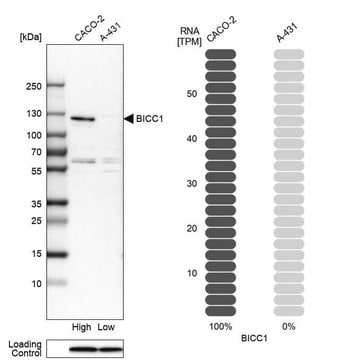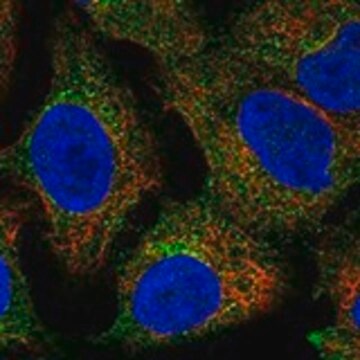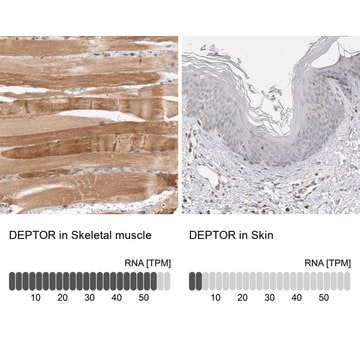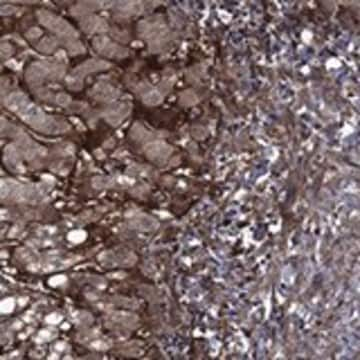MABE344
Anti-BICC1/Protein Bicaudal C Homolog 1 Antibody, clone 2D9.1
clone 2D9.1, from mouse
Synonym(s):
Protein bicaudal C homolog 1, Bic-C
About This Item
Recommended Products
biological source
mouse
Quality Level
antibody form
purified immunoglobulin
antibody product type
primary antibodies
clone
2D9.1, monoclonal
species reactivity
human, mouse
technique(s)
immunoprecipitation (IP): suitable
western blot: suitable
isotype
IgG1κ
NCBI accession no.
UniProt accession no.
shipped in
wet ice
target post-translational modification
unmodified
Gene Information
human ... BICC1(80114)
General description
Specificity
Immunogen
Application
Epigenetics & Nuclear Function
RNA Metabolism & Binding Proteins
Immunoprecipitation Analysis: 9 µg from a representative lot immunoprecipitated exogenously expressed human BICC1 isoforms 1 and 2 from 0.5 mL (~50-100 mg) of HEK293 transfectants lysates (Courtesy of Dr. Thomas Tuschl laboratory, The Rockefeller University, New York, NY).
Quality
Western Blotting Analysis: 0.2 µg/mL of this antibody detected 10 µg of recombinant human BICC1.
Target description
Physical form
Storage and Stability
Other Notes
Disclaimer
Not finding the right product?
Try our Product Selector Tool.
Storage Class Code
12 - Non Combustible Liquids
WGK
WGK 1
Flash Point(F)
Not applicable
Flash Point(C)
Not applicable
Certificates of Analysis (COA)
Search for Certificates of Analysis (COA) by entering the products Lot/Batch Number. Lot and Batch Numbers can be found on a product’s label following the words ‘Lot’ or ‘Batch’.
Already Own This Product?
Find documentation for the products that you have recently purchased in the Document Library.
Our team of scientists has experience in all areas of research including Life Science, Material Science, Chemical Synthesis, Chromatography, Analytical and many others.
Contact Technical Service







